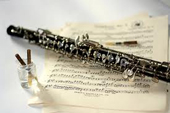MD/PT Testimonials
What have doctors and physical therapists said about the Alexander Technique?
Increasing numbers of physicians and health care professionals are recommending the Alexander Technique to their patients. Offered in wellness centers and health education programs worldwide, the Alexander Technique is appropriate for patients with chronic back pain, neck pain, migraines, repetitive stress injuries, balance and coordination problems, and for the depression and anxiety that often accompanies chronic pain and stress.
Here are some comments from doctors and health professionals:
“After more than 25 years of being a surgeon and operating, pain in my neck and back became intolerable. Surgeons are beginning to be more open about this occupational hazard and a leading surgeon in Sweden mentioned on social media that the Alexander Technique was life-changing for him. I googled the words ‘Alexander technique’ and I found Andrea Fedele right here in the Houston area. She taught me basic techniques on how to sit, stand, hold my body, rest my body, and even how to maneuver my body and muscles during complex and often long surgical procedures. I am much more comfortable and at ease now and also grateful for these “life-changing” techniques I have learned. I have incorporated them into my entire life.”
“The Alexander Technique remains the best of the self-care strategies to prevent the sequel of poor posture and poor breathing.”
– Harold Wise, MD, PC, New York, NY
“The Alexander Technique stresses unification in an era of greater and greater medical specialization. Its educational system teaches people how to best use their bodies in ordinary action to avoid or reduce unnecessary stress and pain. It enables clients to get better faster and stay better longer. This is undoubtedly the best way to take care of the back and alleviate back pain.”
– Jack Stern, MD, PhD, Neurosurgical Group of Westchester, White Plains, NY
“I found the Technique to be so beneficial in my condition that I have been referring patients in certain situations for Alexander lessons over the last several years.”
– Howard L. Rosner, MD Director, Pain Management Service, The New York Hospital-Cornell Medical Center, New York, NY
“Habitual patterns of scrunched and tense use of the body are so engrained in our lives that the concept may seem extraordinary that unlearning these patterns can actually relieve pain and discomfort–but lessons in the Alexander Technique not only succeed for many people, they also allow a welcome sense of new ease in performance of all physical activities, e.g., playing a sport, using a computer keyboard, or playing a musical instrument. Research in which I have been involved has also shown enhanced strength of the muscles of breathing after a course of lessons.”
– John H.M. Austin, MD, Professor Emeritus of Radiology, Columbia University Medical Center, New York, NY
“I think I have given my patients something almost as good as magic. I have taught them what to do and not do when their backs give them trouble, and how to reduce unnecessary stress and pain. As a result, they no longer have to feel afraid and helpless when back pain occurs. Many consider themselves cured because they have been able to return to an active, normal lifestyle.”
– Deborah Caplan, PT, certified Alexander Technique teacher and author of Back Trouble, New York, NY
“Not only do I see the therapeutic benefits of this work with various patient problems, but it has helped me deal effectively with my own adverse muscular tension. I continue to experience a newfound freedom of movement in my own body that I believe is making me a more effective therapist.”
– Howard W. Makofsky, MS, OCS, Mastic Beach, NY
“In addition to its physiologic and musculoskeletal benefits, the Alexander Technique is extremely helpful in relieving the psychological states of depression and anxiety that so often accompany chronic pain and disease. It is my belief, based on professional experience, that the Alexander Technique should be part of all preventative health and education programs. It is as basic as good nutrition.”
– Jill Sanders, DO, New York, NY
“The Alexander Technique makes sense in that appropriate use of the body will lead to reduction of various musculoskeletal disorders and remediate others which are established. No equipment is needed, just the skill and training of the teacher. This technique is very worthwhile as a primary preventative therapy. It is especially useful when posture is a key factor in back injuries while lifting and for workers who perform repetitive tasks while sitting.”
– Robert D. Greene, MD, Emergency Department, Norwalk Hospital, Norwalk, CT
“I recommend people to the Alexander Technique who have not improved with traditional rehabilitative therapies. Part of their pain may be due to posture and the improper use of their bodies. Many people who have neck or back pain and have gone through heat, ultrasound and massage with no relief can be helped by learning the Alexander Technique. It definitely works. Nothing works for everyone. As one well-versed in using physical therapy and biofeedback, I know how valuable this technique is. I highly recommend it.”
– Barry M. Scheinfeld, MD, Specialist in Rehabilitation Medicine and Pain Management, Community General Hospital, Harris, NY
“The Alexander Technique has been very helpful in identifying the postural and breathing habits that contribute to my fatigue and muscle soreness. I found it a good value: cost effective, making me less dependent on chiropractors and more comfortable at work.”
– Douglas J. Bush, DMD, Chester, NJ
“When, in spite of my instruction, a patient is having difficulty understanding how to make changes in habitual movement patterns or has a profession with particular physical demands, I typically suggest the Alexander Technique. I have found it very helpful for patients who have low body awareness or who have trouble relaxing. Improvement in these areas facilitates many physical therapy modalities, especially cervical spine joint mobilization.”
– Gail King, PT, MS, Backtec Orthopedic & Sports Physical Therapy, New York, NY
“I fell and suffered a compression fracture of the back. Upon recommendation of a fellow therapist, I started treatment in the Alexander Technique. I have noticed not only a steady reduction of pain, but improvement in my general flexibility, balance and bearing. I use the Technique in conjunction with other physical exercise, and have found no contraindications.”
– Jean P. Binnie, MA, MS, NCPsychA, Hamptons Counseling Center, Hampton Bays, NY
What scientific research has been done on the effectiveness of the Alexander Technique?
To date there have been nearly a dozen experimental studies in peer-reviewed journals showing the effectiveness of the Alexander Technique. For an annotated bibliography and links to some of the articles, click here.

 I play and teach the oboe and English horn as well. If you are interested in lessons or performances, please contact me.
I play and teach the oboe and English horn as well. If you are interested in lessons or performances, please contact me.